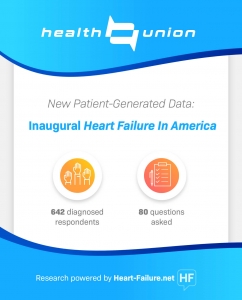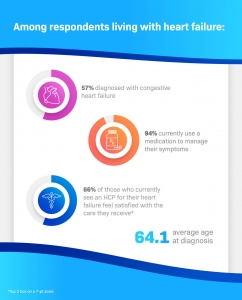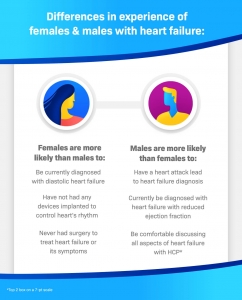Heart Failure In America
New Health Union survey data helps the healthcare industry better understand and reach people living with heart failure
For the first time, Health Union has gathered patient-reported data from hundreds of real people impacted by heart failure. The inaugural Heart Failure In America survey, a syndicated research study from Health Union, quantifies the true impact of this condition among patients – going beyond basic demographics and symptoms to establish a deep understanding of the holistic patient journey for those affected and to track trends over time.
The new data from the inaugural Heart Failure In America survey reveals deep insights of a population of 642 respondents diagnosed at an average age of 64.1, and of which 57% have been diagnosed with congestive heart failure. 94% of people currently use a medication to manage their symptoms and 66% of those who currently see a HCP for their heart failure feel satisfied with the care they receive.*
People living with heart failure experience a wide range of challenges and it’s important for the healthcare industry to look specifically at gender differences in this experience. The survey** showed female respondents are more likely than males to have a diastolic heart failure diagnosis, have not had any devices implanted to control their heart’s rhythm, and have never had surgery to treat heart failure or its symptoms. Male respondents, however, were more likely than females to have a heart attack lead to a heart failure diagnosis, currently be diagnosed with heart failure with reduced ejection fraction, and to be more comfortable discussing all aspects of heart failure with their doctor.*
This access to a broad base of knowledge, facts and data gleaned from Health Union’s open online health communities like Heart-Failure.net, and syndicated research allows the healthcare industry to harness the power of Health Union’s continuous immersion in the patient experience to deliver smarter insights and implications–so you can spend your time developing the strategies that will make a difference.
*Top 2 box on a 7-pt scale
**Female, n=424; Male, n=218





